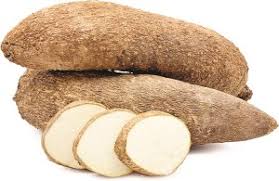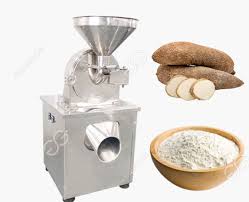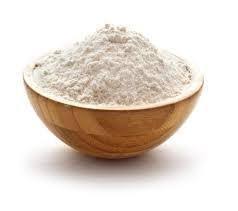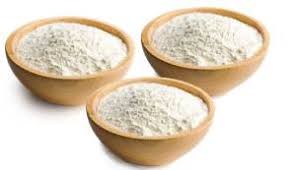Yam Flour Production is an essential aspect of the agricultural and food processing sectors, particularly in tropical regions where yam is a staple food. Yam, a tuber native to Africa, Asia, and the Caribbean, is known for its nutritional benefits and versatility in various culinary applications.
As consumer demand for convenient and nutritious food products continues to rise, yam flour has emerged as a valuable alternative to traditional flour made from grains. This guide aims to provide a comprehensive overview of yam flour production, from the cultivation of yams to the processing methods involved in turning fresh tubers into flour.
The significance of yam flour lies not only in its culinary uses but also in its nutritional profile. It is rich in carbohydrates, vitamins, and minerals, making it an excellent source of energy. Yam flour is gluten-free, which makes it an appealing option for individuals with gluten sensitivities or those seeking to diversify their diets. Moreover, yam flour is often utilized in various recipes, including pastries, sauces, and thickening agents, further enhancing its popularity in both home kitchens and commercial settings.
To produce high-quality yam flour, it is crucial to start with the right yam varieties. Different types of yams possess unique qualities that can affect the flour’s texture, taste, and nutritional content. Common varieties used for flour production include white yam, yellow yam, and water yam. Each variety has its distinct characteristics, and understanding these differences is key to selecting the best tubers for flour processing.
Once the yams are harvested, the processing journey begins. This involves thorough cleaning to remove dirt and impurities, followed by peeling and slicing the tubers. The preparation phase is critical, as it directly influences the final quality of the flour. Proper handling during this stage ensures that the yams retain their nutritional value and desirable taste.
After slicing, the yams undergo a drying process. There are various drying methods available, including sun-drying and mechanical drying. Each method has its advantages and disadvantages, impacting the final product’s quality and shelf life. Once thoroughly dried, the yams are ground into a fine powder, resulting in yam flour. This powder can then be packaged for distribution or further processed into various food products.
In addition to the production process, understanding the market dynamics surrounding yam flour is vital. As awareness of gluten-free and alternative flour options increases, so does the demand for yam flour.
Entrepreneurs and farmers can capitalize on this trend by exploring various marketing strategies and distribution channels. This guide will also touch upon the economic aspects of yam flour production, providing insights into cost management, pricing strategies, and potential profit margins.
Finally, the guide will delve into potential challenges and solutions within yam flour production. These may include issues related to storage, shelf life, and maintaining quality standards during processing. By addressing these challenges, producers can ensure a consistent supply of high-quality yam flour that meets consumer expectations.
This complete guide on yam flour production aims to equip readers with the knowledge necessary to navigate the entire production process, from cultivation to market strategies.
Whether you are a farmer looking to diversify your crop production, an entrepreneur venturing into food processing, or simply interested in learning more about this versatile ingredient, this guide will provide valuable insights to enhance your understanding and practices in yam flour production.
Yam Varieties

Yams come in various types, each with unique characteristics and uses. Here are some notable varieties:
1. White Yam (Dioscorea rotundata): Known for its starchy texture and neutral flavor, white yam is one of the most common varieties used in cooking and flour production.
2. Yellow Yam (Dioscorea cayenensis): This variety has a yellow flesh and is sweeter than white yam. It’s often used in traditional dishes and is highly sought after for its taste.
3. Water Yam (Dioscorea alata): Also known as purple yam, this variety has a moist texture and is often used in desserts and savory dishes. Its vibrant purple color makes it visually appealing.
4. Nigerian Yam (Dioscorea rotundata): This is a staple in Nigerian cuisine, highly prized for its flavor and versatility in various dishes.
5. Chinese Yam (Dioscorea opposita): Also known as Shan Yao, this variety is used in traditional medicine and culinary practices, especially in Asian cuisine.
Harvesting Yam for Flour Production
Harvesting yam for flour production involves specific steps to ensure quality:
1. Timing: Harvest yams when they are mature, typically 6-12 months after planting, indicated by yellowing leaves and dieback.
2. Tools: Use a spade or fork to carefully dig around the tubers to avoid damaging them. Gently lift the yam from the soil.
3. Inspection: Check the tubers for quality. Select firm, unblemished yams for flour production. Avoid any with signs of rot or damage.
4. Transportation: Handle harvested yams with care to prevent bruising. Store them in a cool, dry place until ready for cleaning and processing.
Cleaning and Preparing Yam Tubers
Proper cleaning and preparation of yam tubers are essential for quality flour production:
1. Washing: Rinse the harvested yams under running water to remove soil and debris. A brush can be used for stubborn dirt.
2. Peeling: Peel the yams with a sharp knife or peeler. Remove any blemishes or dark spots to ensure a clean product.
3. Cutting: Cut the peeled yams into uniform slices or chunks to facilitate even drying and processing.
4. Soaking (optional): Soak the cut yam pieces in water with a bit of lemon juice or vinegar to prevent discoloration before drying.
Techniques for Drying Yam
Drying yam effectively is crucial for producing high-quality flour. Here are some techniques:
1. Sun Drying: Spread the cut yam pieces on clean, flat surfaces or drying racks in direct sunlight. Turn them regularly to ensure even drying, which may take several days, depending on the weather.
2. Dehydrator: Use a food dehydrator for controlled drying. Arrange the yam pieces in a single layer and set the dehydrator to a low temperature (around 50-60°C or 120-140°F). This method is efficient and preserves nutrients.
3. Oven Drying: Preheat the oven to a low setting (around 50-60°C or 120-140°F). Place the yam pieces on a baking sheet in a single layer. Leave the oven door slightly ajar to allow moisture to escape, checking regularly until fully dried.
4. Air Drying: In low-humidity environments, you can air-dry yam by hanging the pieces in a well-ventilated area. Ensure they are spaced apart for optimal airflow.
Read Also: The Techniques Used for Enhancing Farm Yield
Grinding Methods for Yam Flour

Grinding yam into flour requires specific techniques to achieve a fine and consistent texture. Here are some common methods:
1. Mortar and Pestle: This traditional method involves using a mortar and pestle to grind dried yam pieces into flour. While it requires more physical effort and time, it can produce a fine flour if done correctly.
2. Grain Mill: A grain mill is an efficient tool for grinding yam flour. Feed the dried yam pieces through the mill to achieve a consistent flour texture. Adjust the settings for desired fineness.
3. Blender: A high-power blender can be used to grind dried yam pieces into flour. Blend small batches at a time to avoid overheating the motor. Ensure the yam is completely dried to prevent clumping.
4. Food Processor: Similar to a blender, a food processor can efficiently grind dried yam. Pulse the dried yam until it reaches the desired flour consistency.
5. Hammer Mill: This industrial option is suitable for large-scale production. A hammer mill uses rotating hammers to crush the dried yam into flour quickly and efficiently.
Quality Control in Yam Flour Production
Implementing quality control measures is essential to ensure the consistency and safety of yam flour. Here are key steps:
1. Raw Material Inspection: Check the harvested yams for quality before processing. Select firm, healthy tubers free from damage or rot.
2. Moisture Content Testing: Monitor the moisture content of the dried yam. Ideally, it should be below 10% to prevent spoilage and ensure a longer shelf life.
3. Texture and Particle Size Analysis: Test the flour for consistency in texture and particle size. This can be done by sieving the flour through standard mesh sizes.
4. Microbial Testing: Conduct tests for microbial contamination to ensure the flour is safe for consumption. This includes checking for pathogens and spoilage organisms.
5. Packaging Integrity: Inspect packaging for leaks or damage to prevent contamination and maintain freshness. Proper sealing is crucial to protect the flour from moisture and pests.
Packaging and Storage of Yam Flour
Proper packaging and storage are vital to maintaining the quality of yam flour. Here are some best practices:
1. Packaging Materials: Use food-grade, moisture-proof packaging materials such as plastic bags, vacuum-sealed bags, or containers made from glass or BPA-free plastic. This helps preserve the freshness and prevent contamination.
2. Labeling: Clearly label packages with information such as production date, expiration date, and storage instructions. This helps track freshness and provides important information to consumers.
3. Storage Conditions: Store yam flour in a cool, dry place away from direct sunlight. Ideal storage conditions include temperatures between 15-25°C (59-77°F) and low humidity to prevent clumping and spoilage.
4. Long-term Storage: For extended shelf life, consider freezing yam flour. Store in airtight containers to prevent moisture absorption and freezer burn.
5. Regular Inspection: Periodically check stored yam flour for signs of spoilage, such as off-odors or clumping. Discard any flour that shows signs of deterioration.
Read Also: 16 Medicinal Health Benefits Of Pomaderris kumeraho (Kumerahou)
Nutritional Benefits of Yam Flour

Yam flour, made from dried yam tubers, offers several nutritional benefits that contribute to a healthy diet. Here are some key benefits:
1. Rich in Carbohydrates: Yam flour is a significant source of carbohydrates, providing energy for daily activities and maintaining bodily functions.
2. Dietary Fiber: It contains dietary fiber, which aids in digestion, helps maintain bowel health, and can assist in controlling blood sugar levels by slowing the absorption of sugar.
3. Vitamins and Minerals: Yam flour is rich in essential vitamins and minerals, including Vitamin C, potassium, and manganese, which are important for immune function, muscle health, and metabolic processes.
4. Antioxidant Properties: The antioxidants present in yam flour can help protect the body from oxidative stress and reduce the risk of chronic diseases.
5. Gluten-Free: Yam flour is naturally gluten-free, making it an excellent alternative for individuals with gluten intolerance or celiac disease.
Culinary Uses of Yam Flour
Yam flour is versatile and can be used in various culinary applications. Here are some popular uses:
1. Thickening Agent: Yam flour can be used as a thickening agent in soups, sauces, and stews, providing a smooth texture without altering the flavor.
2. Baking: It can be incorporated into baked goods such as bread, pancakes, and muffins, adding moisture and a unique flavor profile.
3. Fufu: In many West African cultures, yam flour is used to make fufu, a starchy side dish that pairs well with soups and stews.
4. Porridge: Yam flour can be cooked with water or milk to create a nutritious porridge, which can be sweetened or flavored as desired.
5. Gluten-Free Products: It is often used in gluten-free recipes, allowing individuals with dietary restrictions to enjoy a variety of foods.
Challenges and Solutions in Yam Flour Production
Despite its benefits, yam flour production faces several challenges. Here are some common challenges and their solutions:
1. Quality Control: Ensuring consistent quality in yam flour can be challenging due to variations in yam tuber quality. Regular inspection and standardized processing methods can help maintain quality.
2. Moisture Management: High moisture content in yam flour can lead to spoilage and reduced shelf life. Proper drying techniques and moisture testing during production are essential to achieve the desired moisture levels.
3. Market Competition: The market for flour products is competitive, which can affect sales. Differentiating yam flour through branding, emphasizing its health benefits, and targeting niche markets can enhance competitiveness.
4. Consumer Awareness: Limited consumer awareness of yam flour’s nutritional benefits can hinder its adoption. Educating consumers through marketing campaigns, recipes, and cooking demonstrations can increase its popularity.
5. Storage Issues: Improper storage can lead to contamination and spoilage. Implementing proper storage practices, such as using airtight containers and monitoring environmental conditions, can mitigate these risks.
Do you have any questions, suggestions, or contributions? If so, please feel free to use the comment box below to share your thoughts. We also encourage you to kindly share this information with others who might benefit from it. Since we can’t reach everyone at once, we truly appreciate your help in spreading the word. Thank you so much for your support and for sharing!
Read Also: Best Organic Fertilizer for Vegetables

